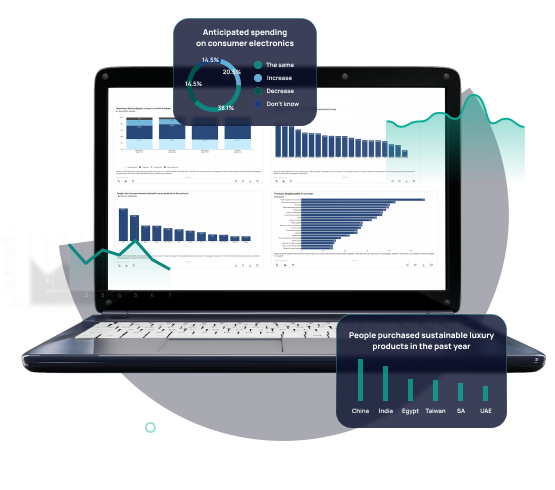Our Methodology

Every year RetailX benchmarks the eCommerce and multichannel performance of thousands of retailers worldwide across the Customer, Product, Operations, and Capital value chains.
Footprint
Inclusion in RetailX Rankings is based on the size, or ‘Footprint’, of retailers: their impact in terms of search volume, visits, stores, social reach and turnover.
The rankings include the largest retailers in the given region (e.g. the European Economic Area plus the UK and Switzerland for the EU1000 and worldwide for the Global1000). Assessment is based on their retail operations within the region as opposed to wholesaling or other non-retail activities.
We take into account retail revenues, both online and offline, the number of stores, the volume of web traffic to retail websites, and the popularity and use of apps to give each retailer a Footprint value.
Performance and Value Chains
Our rankings are based on performance – the services that retailers offer the consumer – and how that performance is rewarded via revenues, profile and profit. Four Value Chains drive this performance:
1. The Customer Value Chain: Retail businesses that stand out in the Customer Value Chain do so when they add value through a strong customer experience. The primary KPI for this value chain is measured by profit per customer
2. The Product Value Chain: Retail businesses stand out in the Product Value Chain when they put a strong focus on selling at a profit. The primary KPI in this value chain is net margin.
3. The Operations Value Chain: Retailers that stand out in the Operations Value Chain do so when they manage both their orders and their fulfilment effectively and profitably
4.The Capital Value Chain: Retailers and brands that stand out in the Capital Value Chain do so by growing their profits and assets successfully. The primary KPIs for this value chain are return on capital employed (ROCE) or invested (ROCI).
KPIs
Each Value Chain is assessed across nine KPIs, with RetailX metrics assigned as indicators against each of 36 combinations of Value Chain and KPI. For the purposes of our rankings, we focus on the following KPIs in assessing the operations in each Value Chain:
- Access: how to access the market, customers, products and capital.
Volume: how to get more of everything. More customers, traffic, product, capital and capacity. - Margin: how to increase the margin on interactions.
- Conserve: eliminating margin-destroying waste.
- Share: increasing share of attention, customers, products and wallets.
- Choice: how to make the best use of scarce resources when buying, marketing and running operations.
We also look at how organisations can flex, adapt and improve the business operating model: (optimising process flows and capabilities), change and innovation practice and capital access, performance and creation.
Research Parameters
The several hundred performance metrics we track are assigned, along with a relative weight, to one or more value chain KPI combinations, where they serve as ranking signals of retailers’ performance. Occasionally, metrics are negative against one KPI and positive against another in the same value chain:
- Corporate: revenue, profitability, EBITDA, share price, market capitalisation, number of employees, ownership of the company.
- Customer service: speed and helpfulness of responsiveness to simple questions; access channels.
- Checkout friction: speed and simplicity of sign-in/ sign-up and payment, number of interactions from add to basket to completed sale.
- Finding the store: number and spread of stores, stock visibility on website, ratings and reviews.
- Finding the website: number of visitors, duration of time on-site and bounce rate, search visibility, Google Lighthouse assessments, ratings and reviews.
- Fulfilment: flexibility, reliability, and speed of delivery and collection
- Localisation: language, currency, customer service, seasonality/sales cycles.
- Mobile app: availability, popularity and usage, usability and functions.
- Returns: clarity and visibility of policy and its length and terms, convenience and cost to the customer.
- Social media: presence, availability, the nature of interaction.
- Sustainability: independent standards signed up to, commitments and verified compliance, transparency of product supply chains (social and environmental impact), and support for mending/repair/recycling of products sold.
- Website usability: intuitiveness of navigation and product selection, Google Lighthouse assessments.
Rankings
The final ranking of the list combines both Footprint with the Value Chain results of all retailers in the list to produce a ranking where retailers are listed alphabetically within performance clusters.
.
.
Retail performance
.
Overall, Customer, Product, Operations and Capital performance index charts
RetailX combines scores of metrics across logistics, website design, user journeys, sustainability and other areas into performance indices. These charts show the relative performance of individual retailers and groups of retailers over time.
Total revenue chart
This chart shows the published Total Revenue for retail corporations. The years shown are the calendar years in which companies’ financial reporting periods end.
Gross profit chart
This chart shows the published Gross Profit for retail corporations. The years shown are the calendar years in which companies’ financial reporting periods end.
Revenue growth chart
This chart shows the year-on-year growth of Total Revenue for retail corporations. Each data point is expressed as a percentage of the previous year’s value, i.e. a company’s 2025 value is calculated by subtracting 2024’s Total Revenue from 2025’s Total Revenue and dividing the result by 2024’s Total Revenue. The years shown are the calendar years in which companies’ financial reporting periods end.
.
.
Web traffic
.
Total web visits, Web visits by country, Web visits growth, Pages per visit, Bounce rate and Average visit duration charts
These charts show consumers usage of retailers’ websites. In the generic views, these charts show global web traffic, whereas in the ranking-comparison they show region-specific values. RetailX combines Similarweb data on website traffic with our own research matching retailers to their websites, lists of leading retailers, and sector categorisations. See similarweb.com for more information about web traffic research.
Logistics
Delivery and returns convenience charts
RetailX indexes retailers’ relative performance in metrics across delivery such as delivery time, next-day and same-day delivery, click and collect options, and standard costs and timeframes. For returns, the length of the return policy, methods of return and allowed circumstances and conditions of return are benchmarked. More convenience and less cost to the consumer is considered ‘better’ for the purposes of this indexed comparison.
Sectors chart
This chart shows the percentage of retailers that fall into RetailX’s exclusive sector categories. Retailers with more than one dominant sector are categorised as ‘multi-sector’.
Public vs private chart
This chart shows the percentage of retail brands in the list that are operated by publicly traded corporations compared to those that are not. Very rarely a corporation is public but not publicly traded – these companies occupy a third category.
Business type chart
This chart shows the percentage of retailers that are marketplaces (which host third-party sellers), brands (which mostly sell own-label goods), and retailers, which are neither of the above. In the rare cases where a retailer is both a brand and a marketplace, it is counted under the marketplace category for the purposes of this chart.
Headquarters chart
This chart shows the percentage of retailers with their operational retail headquarters in a country. Note that this is distinct from the corporation’s registered jurisdiction, or, if applicable, where the holding company is based if the holding company isn’t involved in day-to-day retail decisions.
.
.
Sustainability
Overall sustainability, Action, Commitment and Transparency charts
RetailX reviews retailers’ consumer and investor websites, annual reports, sustainability reports, press briefings, and customer communications to gauge whether retailers talk about sustainability at all and, if so, on what topics. We research whether retailers set targets in particular areas and whether those targets are verified or reviewed independently.
.
.
.
.
.
.
Suppliers
Advertising, Analytics & Tracking, Content Delivery Network, Content Management System, Ecommerce, Payments and Shipping suppliers charts
RetailX combines data on the products websites use and the categories products belong to from our knowledge partner BuiltWith with our own research matching websites to retailers and targeted countries. See builtwith.com for more information.
.
.
Stores
Stores operated, Stores by country and Stores rating charts
RetailX combines information from Google Maps, generative AI tools, and our own desk research to ensure our coverage is both rigorous and broad. Where sources disagree, special attention is paid. All companies are checked by at least three methods, and the largest are given additional checks even where all sources agree.



